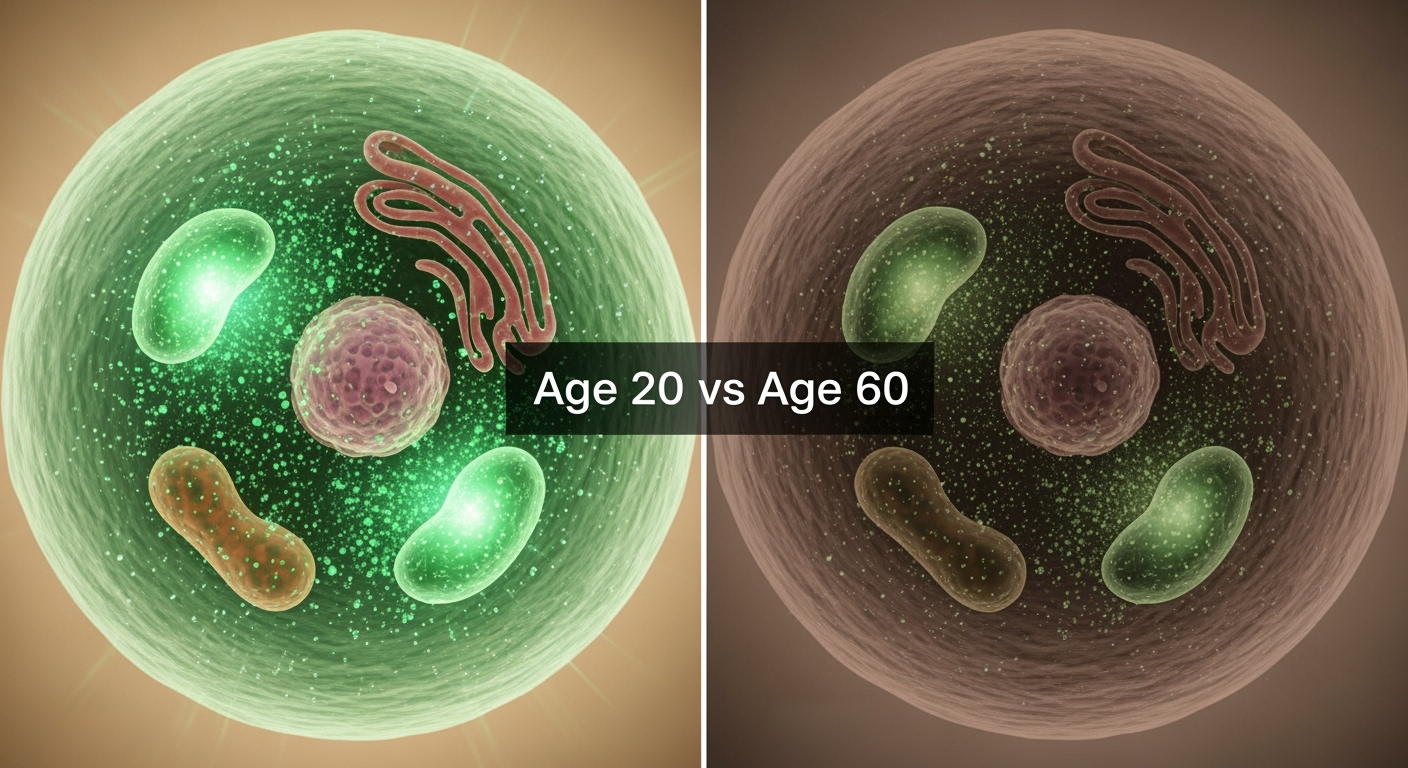Discover why your NAD+ levels drop by 50% as you age and how this decline impacts your energy, cellular health, and longevity.

Your body is quietly losing one of its most critical molecules right now. By the time you reach 60, your NAD+ levels will have plummeted by approximately 50% compared to your youth¹. This dramatic decline isn't just a number on a lab report—it's fundamentally reshaping how your cells function, repair themselves, and generate energy.
NAD+ (nicotinamide adenine dinucleotide) serves as your cellular powerhouse, driving over 500 enzymatic reactions in your body. As you age, multiple factors converge to drain your NAD+ reserves. Your body's natural production capacity decreases, while consumption by NAD+-dependent enzymes accelerates².
Think of it like a bank account where deposits shrink while withdrawals increase. Research shows that NAD+ levels in human skin decline significantly with age, with tissue samples from older adults showing markedly reduced NAD+ concentrations compared to younger individuals³.
The consequences of NAD+ depletion ripple through every system in your body. Your mitochondria—the energy factories in your cells—struggle to produce ATP efficiently. DNA repair mechanisms slow down, allowing cellular damage to accumulate. Metabolic processes become less efficient, and your body's natural defense systems weaken.
Studies demonstrate that declining NAD+ levels correlate directly with age-related metabolic dysfunction and reduced cellular resilience⁴. This isn't about vanity or minor inconveniences. We're talking about the fundamental biological processes that determine how well you age.
Understanding NAD+ decline represents a critical shift in how we approach healthy aging. While the decline is natural, it's not necessarily inevitable at its current rate. Therapeutic NAD+ supplementation aims to restore these depleted levels, potentially supporting the cellular functions that define vitality and longevity.
The science is clear: NAD+ depletion is a hallmark of aging. What you do about it could redefine your cellular health for decades to come.